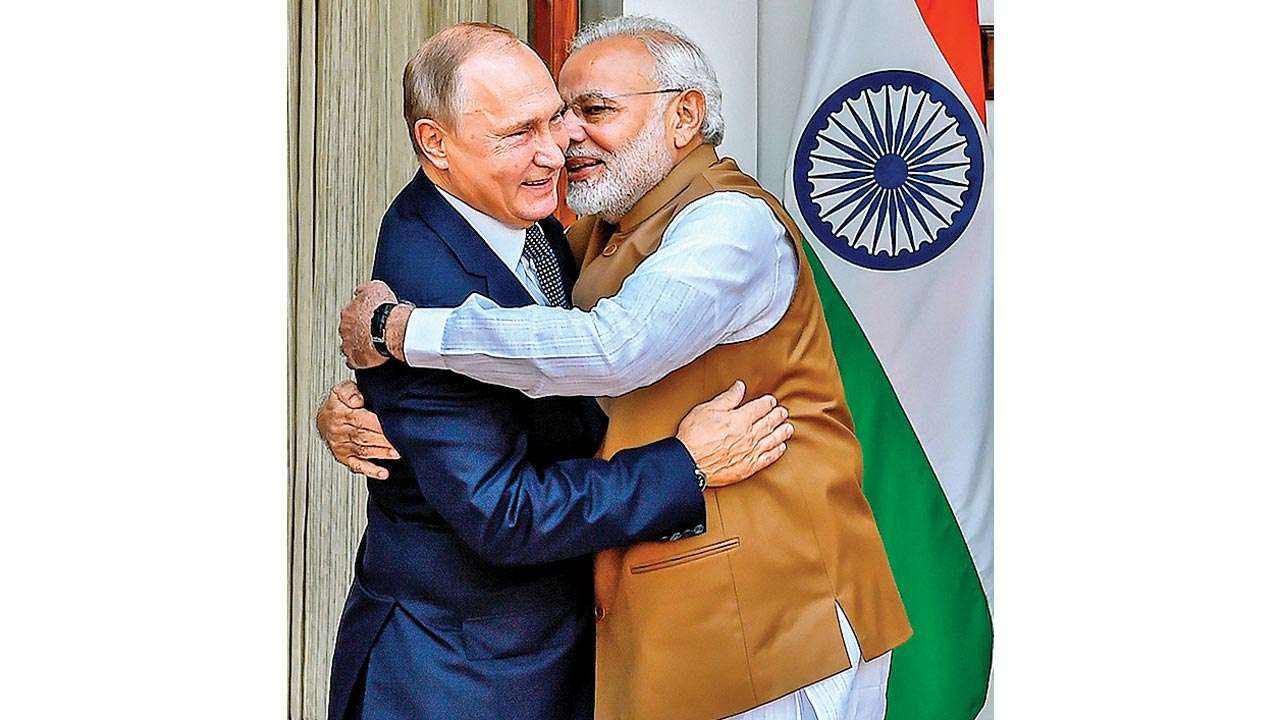
This is clearly a case of the triumph of experience over hope. Prime Minister Narendra Modi and Russian President Vladimir Putin have re-affirmed India-Russia friendship — which has withstood the test of time and tectonic global shifts for nearly four decades — in a resounding manner that heralds the start of a whole new phase in bilateral relations. Unmindful of the US threats of sanctions, which President Donald Trump and his administration have held out for months, Modi went ahead and signed the $5 billion deal with Russia for five S-400 Triumf missile defence systems. This missile defence shield is expected to boost India’s capability to hold its own against air attacks from China and Pakistan.
In the run-up to the Modi-Putin summit, there was much speculation on whether India would stick to its commitment to sign the $5-billion deal with Russia or buckle under the threat of US sanctions. President Trump has been blandishing the big stick of CAATSA (Countering America’s Adversaries Through Sanctions) for months now as part of his policy to prevent countries from having any economic, defence, commercial and trade deals with Russia. India-Russia talks for the S-400 missile system have been going on since 2015, long before CAATSA came into being.
Of course, turning the screws on Russia for squeezing its economy was only part of the US objective in bringing pressure on India to back off from the S-400 deal. Equally, Washington’s attempt at arm-twisting was to ensure that the US — and not Russia — remained India’s largest supplier of defence hardware. In 2016, by some reckoning, the US had overtaken Russia as India’s biggest defence equipment supplier. Until then Russia was the source of more than 60 per cent of India’s defence purchases. The S-400 deal is expected to restore Russia as the pre-eminent defence supplier and relegate US to second place, which is what Washington was also trying to avoid.
However, as the two leaders made clear, India-Russia relationship is not about defence cooperation alone. This is borne out by the fact that Modi and Putin decided to go slow on other major defence deals for frigates and helicopters. Yet if the defence deal had loomed so large, that was because it was seen as a critical test of India’s ability to assert its strategic autonomy. In the event, Modi has done so, and also because, with the election season here, India cannot be seen as bowing to diktats from other countries against its own national interest. That said, India-Russia relations have been somewhat less intensive and losing content, especially economic content, since Modi assumed office.
However, these deficits may now be more than made up as the relationship, which is now headed for a new phase, is expected to deepen across multiple tracks. The MoUs between NITI Aayog and the Russian economic development ministry, between ISRO and Russia’s Space Agency, between the railways of the two countries and an action plan to extend nuclear cooperation, testify to the resolve on both sides to take the relationship to the next stage. Beyond the bilateral, India-Russia partnership also sends out a strong message to the international community — that of its commitment to multi-polarity in a world increasingly faced with coercive US laws like CAATSA. And, this message is particularly intended for President Trump, who has been behaving unabashedly like a bully.
Whether it be the trade terms Trump is demanding of India or the rhetoric of trade war that he has let loose against China, he seems to be no respecter of countries, their sovereign will and their strategic choices driven by their respective national interests. This is also in evidence when the US holds out the threat of sanctions against countries dealing with Russia and Iran. Now that Modi has refused to be held back from the deal with Russia, the US has, for the moment, chosen silence as the better part of valour. Like all bullies, Trump appears to have beaten a tactical retreat.
Now it remains to be seen whether Modi will go further and defy US threats in India’s dealings with Iran and stick to importing oil from Iran; or seek other sources of oil in the event of a crisis, and at the same time, continue imports from Iran. All the current challenges — from the economic crisis and collapse of markets to the spike in oil prices and trade tariff fall-out — are creations of the Trump Administration. These need to be faced head on, and towards that end, the present may be a good juncture for New Delhi to end its strategic ambivalence.